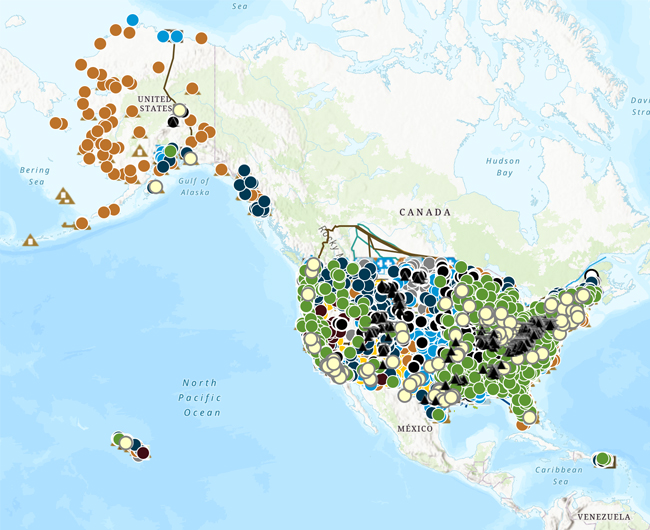Profile Overview
U.S Energy Atlas with total energy layers
 View the interactive map
View the interactive map Quick Facts
- In 2022, Virginia ports handled 38% of the nation’s coal exports, the largest share handled by any state. The Port of Hampton Roads in the Norfolk Customs District is the nation's largest coal export center.
- In 2022, natural gas accounted for 54% of Virginia's total in-state electricity net generation, nuclear power supplied 31%, renewables—mostly biomass and solar energy—provided 11%, and coal fueled less than 4%. Petroleum supplied the rest.
- The Bath County Pumped Storage Station, the largest power plant in Virginia by capacity with a net generating capacity of 3,003 megawatts, is the largest pumped-storage hydroelectric plant in the nation and one of the largest in the world.
- The PPL Pipeline (formerly Plantation Pipeline), one of the nation's largest petroleum products pipelines, delivers refined products throughout the Southeast before reaching its final delivery point in northern Virginia.
- In 2022, about 83% of Virginia’s natural gas production came from coalbeds, and the state accounted for more than one-tenth of the nation’s total coalbed methane production.
Last Updated: January 18, 2024
